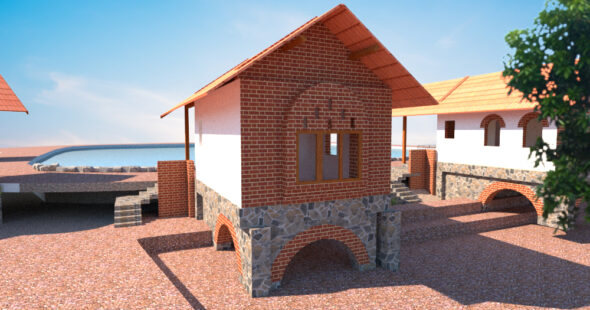
Eco-architecture is more than a design trend—it is a necessity in today’s climate-challenged world. By blending modern innovation with traditional techniques, eco-architecture creates homes and spaces that are healthy, sustainable, and timeless. At its foundation lie materials like lime, mud, stone, and wood, which not only reduce environmental impact but also promote human well-being.
What Defines Eco-Architecture?
Eco-architecture focuses on minimizing environmental footprints while maximizing comfort and durability. It integrates passive design strategies—like natural ventilation, shading, and material selection—with conscious construction methods. Unlike energy-intensive concrete structures, eco-architecture relies on materials that are local, breathable, and naturally suited to the climate.
The Role of Lime in Sustainable Construction
Lime is one of the most versatile and eco-friendly building materials. It offers breathability, regulates humidity, and even has antimicrobial properties, making indoor spaces healthier. When compared to cement, lime stands out for its ability to reabsorb carbon dioxide during curing—making it nearly carbon-neutral over time. Many homeowners are turning to specialized Lime Plaster Service in India to achieve finishes that are both beautiful and sustainable.
Vernacular Elements as Pillars of Design
Traditional architecture across India demonstrates a deep understanding of local materials and climates. Mud houses stay cool in Rajasthan’s desert heat, while laterite stone homes in coastal regions resist humidity. By revisiting these vernacular techniques, eco-architecture builds resilience and ensures buildings adapt harmoniously to their surroundings.
Health and Comfort in Eco-Friendly Homes
Eco-architecture prioritizes occupant well-being. Walls finished with lime and clay breathe naturally, reducing indoor pollutants. Wooden structures create warmth, while stone provides natural insulation. Together, these elements eliminate the need for heavy reliance on artificial cooling or heating systems, cutting down on energy consumption.
The Value of Professional Guidance
Incorporating lime and vernacular materials into contemporary designs requires technical know-how. Working with an Architectural design consultant ensures that these traditional elements are adapted to modern needs without losing their essence. Expert guidance allows homeowners to strike the perfect balance between sustainability, comfort, and style.
Conclusion
Eco-architecture demonstrates that sustainability and elegance are not opposites—they are partners. By building on the foundations of lime and vernacular techniques, we can create spaces that breathe, endure, and tell stories. With conscious material choices and expert design input, eco-architecture not only reduces our environmental footprint but also enriches our daily lives.


